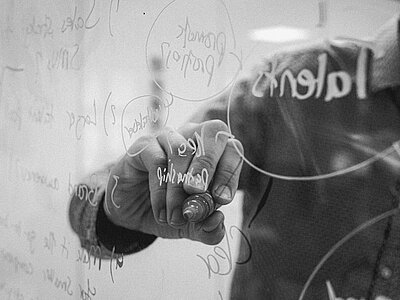Look at the big picture
Within retail, tackling unconscious bias means considering staff, customers and supply chain and all their touch points – in-store, online, and on the phone.
Get out on the shop floor and look at your offer with fresh eyes. Can people with disabilities get into your shop easily and access changing rooms? Are you unconsciously presenting your stock as only suitable for certain customers? Something as simple as updating your mannequins could pay dividends when you’re looking to reduce unconscious bias. Making your mannequins as varied as your customer base can be an important, and often overlooked, step in reducing bias on the shop floor. Likewise, what imagery are you using in online and mobile campaigns? Putting yourself in another’s shoes is invaluable when it comes to tackling the aspects that you’re overlooking.
It’s also worth considering whether there are ‘blind spots’ in your marketing messages that could potentially ostracise customers and harm your brand. A 2012 Christmas advertising campaign by a leading UK supermarket chain portrayed a frazzled mum and was intended to strike a chord with women weighed down with festive preparations. But it actually prompted 620 complaints to the Advertising Standards Authority (ASA) - many from the very women the advert was designed to target, not alienate, who were fed up with being stereotyped.
Sometimes, we can reinforce certain stereotypes in the simplest of ways and it’s easy for these to slip through the net. In 2019, the Geena Davis Institute on Gender in Media found that adverts nominated for Cannes Lions awards depicted male characters working almost twice as often as female characters.
Mind your language
How we speak to our customers matters, both through our marketing messages and through our communication with staff. Take care with your tone of voice – just because a saying is well-used doesn’t mean that it won’t turn your customers off your brand. Watch out for anything gender-specific – ‘Hey guys’, ‘man up’, ‘wears the trousers’ – these are all examples of phrases which could alienate large chunks of your customer base.
This customer base will include people of different religions, races, sexualities, gender identities, socio-economic backgrounds, abilities and ages. Ensure that your team can connect with the needs of all your customers and communicate with them properly. Forrester’s 2018 Customer Experience (CX) Index found that empathy is vital within customer service teams to create and maintain meaningful connections with customers.
Be courageous
The starting point for everyone, in every business, is to be honest with yourself. It’s only by increasing our awareness of unconscious bias that we can start to mitigate against it. Try to recognise and understand your own biases. It can be helpful to have discussions with your team to explore these.
We’ve spoken about our own challenges and attempts to address this within Worldpack – and we’re invested in making positive changes wherever we can.
A good place to start if you’re unsure how to go about making change, is unconscious bias training that seeks to raise awareness of the mental shortcuts we all make, which can lead to snap judgements about others. McKinsey estimated in 2017 that each year about $8bn (£5.8bn) was spent on diversity training in the US alone.
Back in 2011, Spanish banking firm Santander began investing in unconscious bias training among all its branches. Success to Santander is engaging everyone on inclusion. Head of Culture & Inclusion, Damien Shieber, says: “Organisations that focus on empathy and compassion have a better retention of talent and are also a more attractive employer brand for people to join.”
The theory behind implementing the training is that this self-awareness will reduce bias attitudes and behaviours at work, from hiring and promotion decisions to interactions with customers and colleagues.
And there are also decisions you can make that will have relevant and specific impact to your business model. Netherlands-based Booking.com ensures that its chatbots, highly used by many of its customers and mostly designed by white males, remain as free from bias as they possibly can.
No matter what approach you take, and how challenging it may be, making a change in your own retail environment is essential when it comes to creating a more inclusive environment for your company and your customers. With hard work, bias can be mitigated, and organisations can improve their bottom line and become wholly inclusive.
If you’re looking for a partner who is as committed to addressing unconscious bias as you are then speak with one of our account managers today. You can email at online@worldpack.eu or ring us on +31(0) 88 494 20 80.


